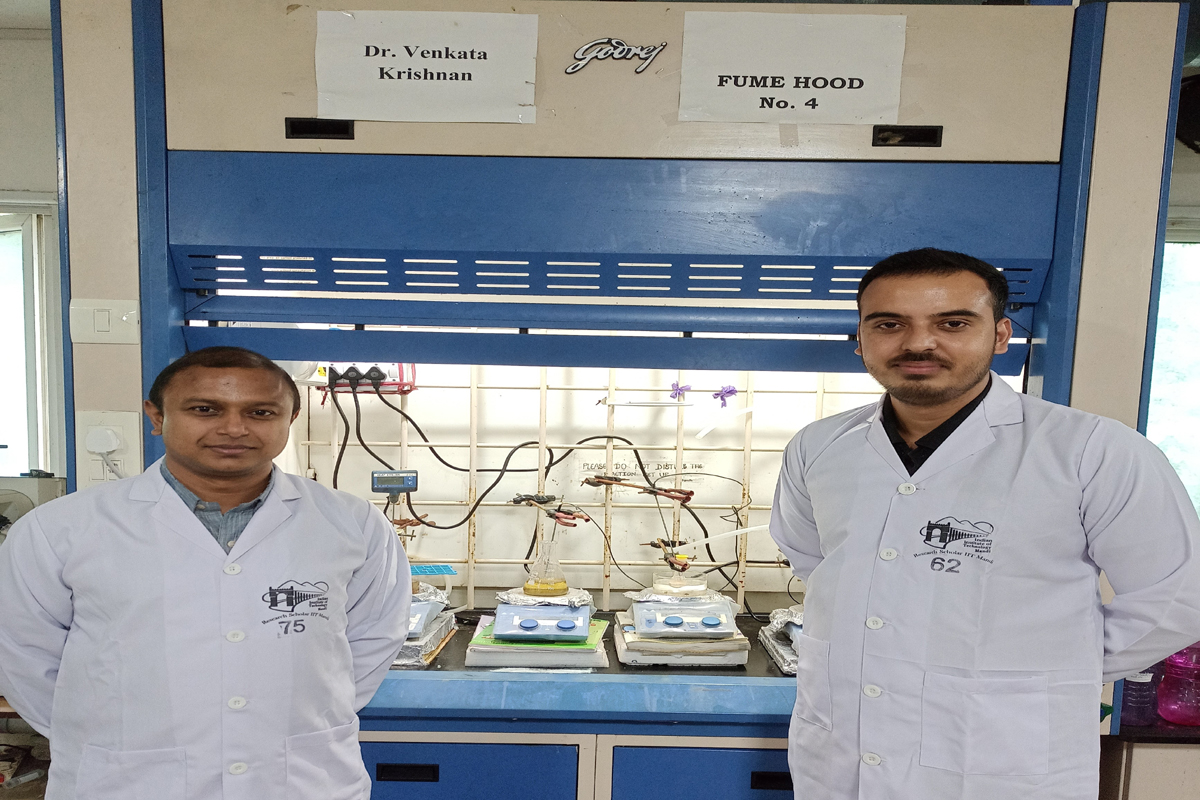In a major discovery that will pave the way for environment conservation besides saving energy and costs, scientists have replicated the structure of a leaf in a low-cost inorganic catalyst to enable light-induced production of green hydrogen and ammonia.
The study is based on Armenian chemist Giacomo Ciamician’s research paper ‘The Photochemistry of the Future’ (1912) in which he had challenged the scientists of his day to imagine using sunlight to produce chemicals much like plants do in photosynthesis.
This challenge was met in the 1970s with researchers showing the possibility of harvesting the sun’s light energy to produce chemicals through the use of special light-activated materials called photocatalysts, heralding the photocatalysis era.
Since then, many photocatalysts have been discovered to bring about light-enabled reactions and studies are ongoing in many areas of photochemical synthesis to discover new photocatalysts and improve existing ones for better performance.
“We have been interested in improving the efficiency of photocatalytic processes for the production of hydrogen and ammonia because these two substances are industrially important.
Hydrogen is a green energy source and ammonia is the backbone of the fertilizer industry. Both hydrogen and ammonia are being manufactured through processes that consume large amounts of energy in the form of heat and also release greenhouse gases.
The use of photocatalysis in the production of these two chemicals can save not only energy and costs but also have significant environmental benefits,” said Dr Venkata Krishan Krishnan, assistant professor at IIT Mandi.
Krishan said the researchers have addressed the main bottlenecks of photocatalysis – poor light absorption, photogenerated charge recombination and the need for catalytically active sites to use sunlight effectively to drive chemical reactions.
“We have improved the properties of a low-cost photocatalyst, calcium titanate through an approach called ‘defect engineering’ and have shown its efficacy in producing green hydrogen and ammonia in two light-driven reactions.
Specifically, the defect engineering was done by incorporating oxygen vacancies in a controlled manner. These oxygen vacancies act as catalytically active sites to promote the surface reactions and thereby enhance photocatalytic performance.
We were inspired by the light-harvesting mechanism of leaves and replicated the surface and internal three-dimensional microstructures of the leaf of the Peepal tree in the calcium titanate to enhance the light-harvesting properties,” he added.
He stated that by this way, they improved the efficiency of light absorption and in addition, the introduction of defects in the form of oxygen vacancies helped to solve the problem of recombination of photogenerated charges.
The scientists studied the structural and morphological stability of the defect engineered photocatalyst and showed that their photocatalyst showed excellent structural stability as the engineered oxygen vacancy defects were well-retained after recyclability studies. They used the catalyst to produce hydrogen from water and ammonia from nitrogen, using the sun’s rays as the activator at ambient temperatures and pressures.
Dr Venkata Krishnan expects that their work would provide a direction for the smart design of defect-engineered three-dimensional photocatalysts for green energy and environment-oriented applications.
The discovery has been made by a multi-institutional team from IIT Mandi, IIT Delhi and Andhra Pradesh based Yogi Vemana University and the study has been published in the prestigious ‘Journal of Materials Chemistry A’.
The team included Dr Venkata Krishnan of IIT Mandi, Dr Saswata Bhattacharya and Manish Kumar from IIT Delhi and Dr Navakoteswara Rao and Prof MV Shankar from Yogi Vemana University, Andhra Pradesh.











